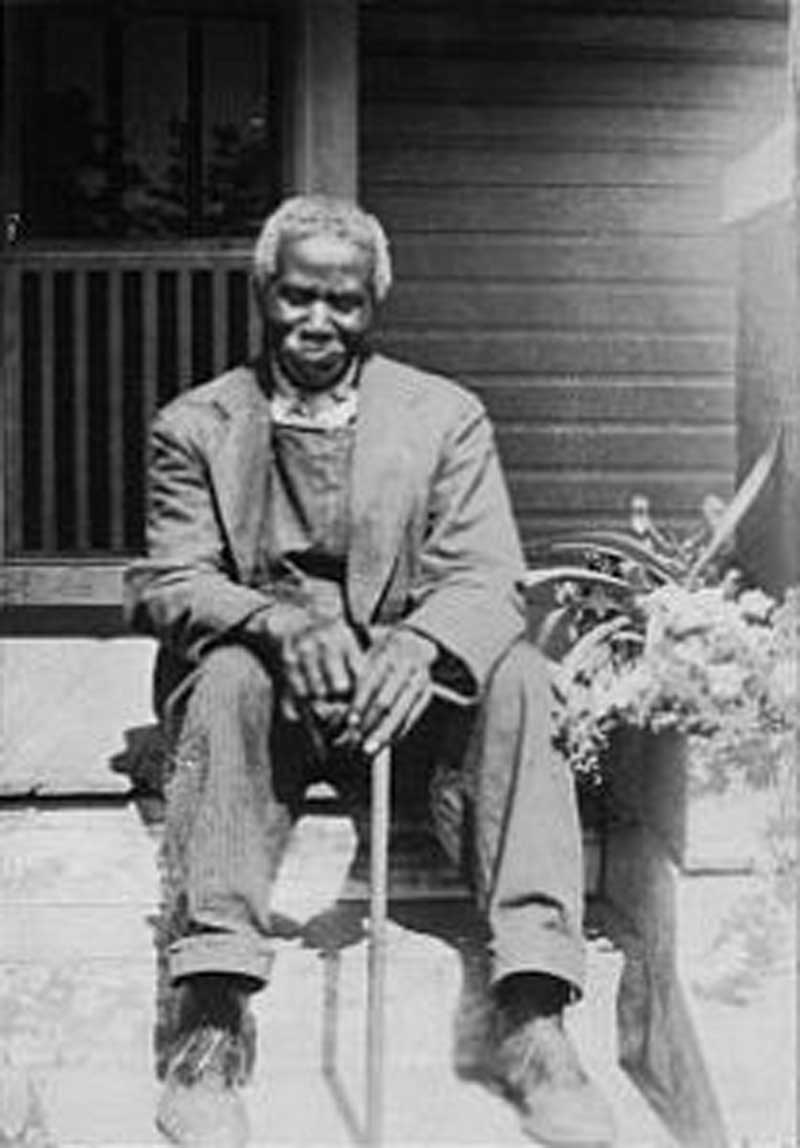The Slave Narratives - Part 7 of a Series of 10

As part of the Federal Writer’s Project during the Great Depression, the Roosevelt Administration employed scores of journalists to interview former slaves and record verbatim (and in dialect) their memories of slavery. From 1936 to 1938 about 2, 300 former slaves were interviewed, most of whom were delighted to tell about “slavery times.” In 1941, these systematically designed interviews were published by state in a multi-volume series called The Slave Narratives.
These volumes, along with Fogel and Engerman’s formidable academic study published in 1974 on the economics of Southern slavery, entitled Time on the Cross, are the two richest scholarly resources on what Southern slavery was really like. In reading the Slave Narratives, one is struck by the remarkable degree of mutual affection between slaves and masters, and secondly by the astonishingly positive reminiscences of the actual conditions of slavery. These positive reminiscences are strongly supported by Fogel and Engerman’s studies of Southern plantations. One is also struck by the degree to which strongly held Christian faith and forbearing kindness prevailed among both masters and slaves.Just as some parents abuse their children today, there were some masters who abused their slaves. However, a study of 331 references in the Slave Narratives to the treatment of slaves revealed that 86 percent of former slaves described their masters as “good” or “kind.” Decidedly negative descriptions probably run less than five percent. John Cameron, age 95, of Jackson, Mississippi commented:
“My old Marster was de bes’ man in de worl’. I jus’ wish I could tell, an’ make it plain jus how good him an’ old Mistis was…De overseers was made to un’erstan’ to be ‘siderate of us…Marse had two of de slaves jus’ to be fiddlers. Dey play for us an’ kep’ things perked up. How us could swing an’ step-‘bout by dat old fiddle music always a-goin’ on. Den Old Marster come ‘round wid his kin’ly smile an’ jov’al sp’rits. When things went wrong he always knowed a way. He knowed how to comfort you in trouble.”
On the other hand, Charlie Moses of Brookhaven, Mississippi, who was twelve when the war ended, had this to say:
“My marster was mean an’ cruel. I hates him, hates him!...We was treated no better than one o’ his houn’ dogs…His family was as scared o’ him as we was…They lived all their lives under his whip…No Sir! No Sir! There warnt no meaner man…He done ever’thing he could ‘cept eat us. We was worked to death.”
John Cameron, had a much more favorable memory of his “Old Marster.”
“De slave cabins, ‘cross a valley from de Big House, was built in rows. Us was ‘lowed to sing, play de fiddles, and have a good time. Us had plenty t’ eat and warm clo’es an’ shoes in de winter time. De cabins was kep’ in good shape. Us aint never min’ working for Old Marster, cause us got good returns. Dat meant good livin’ an’ bein’ took care of right.”
The largest plantations had hospitals and a full-time doctor. The hospitals were usually staffed with one or more full-time slaves acting as nurses and midwives. They were typically elderly slaves who could no longer perform physical labor. Other slave-women specialized in caring for the children on the plantation. Ike Stier, age 99, of Natchez Mississippi commented:
“De slaves was well treated when dey got sick. My marster had a standin’ doctor what he paid by de year. Dey was a horspital building near de quarters an’ a good old granny woman to nuss de sick…When de war broke out I sho’ stuck by my marster. I fit de Yankees same as he did. I went in de battles ‘long side o’ him an’ both fit under Marse Robert E. Lee…Right now, I loves my marster an’ his wife in de grave. Dey raised me and showed me kindness all dey lives. I was pround of ‘em. At de present time I’s under treatment o’ young Dr. Stowers, my marster’s gran’chil’. I trusts him an’ he is sho’ good to me.”
Owners of smaller farms with fewer slaves usually provided the same healthcare for their slaves as they did for their own families. Southern slaves enjoyed a relatively high standard of medical care offering cradle to grave healthcare security. James Lucas, age 104, of Natchez, Mississippi, commented:
“Now-a-days folks don’ live right. In slav’ry times when you got sick a white doctor was paid to git you well. Now all you gits is some no-count paten’ medicine. You is ‘fraid to go to de horspital.”
Abolitionist propaganda claimed that there were many Southern stud farms for breeding slaves. Thousands of hours of professional research has not revealed a single case.
Prince Johnson of Clarksdale may have summed up the prevailing attitude and feelings of former Mississippi slaves with these words:
“Marster would let us work at odd times for outsiders an’ us could use de money for anything us pleased. My gran’ma sol’ ‘nough corn to buy her two feather beds…Us always had plenty t’eat…Folks dese days don’t know nothin’ bout good eatin’…My folks was sho’ quality…When Sund’y come us dressed all clean’an nice an’ went to church. Us went to de white folks’ church an’ set in de gal’ry…I stayed dere (on the plantation) all four years o’ the war. I couldn’t leave ‘cause de men folks all went to de war an’ I had to stay an’ pertec’ de women folks…Maybe things is better lak dey is today. Mos’ folks says so anyway. But if Old Marster were a-livin’ I’d be better off. I know dat to be so.”
According to Jim Allen, age 87, of West Point, Mississippi,
“Our clo’es was all wove and made on de plan’ation...We had a’ plen’y er good uns. We was fitted out an’ out each season, an’ had two pairs of shoes.”
The March 21, 1864, issue of the Fayetteville Observer carried a story of a black Union soldier that refused to fire into a Confederate regiment, saying:
“My young master is thar; and I played with him all my life and he has saved me from getting a many whipping I would have got, and I can’t shoot thar, for I loves my young master still.”
The remarkable prevalence of Christian faith and affectionate bonds between master and slave in the South can be seen in the words of former slave, Adeline Johnson, of Winnsboro, South Carolina:
“I hope and prays to get to heaven. I’ll be satisfied to see my Savior that my old marster
worshiped and my husband preached about. I want to be in heaven with all my white folks, just to wait on them, and love them, and serve them, serta like I did in slavery time. That will be enough heaven for Adeline.”
Those who have been led to see the relationship of master and slave in the South as one of cruel tyranny by masters and suppressed resentment on the part slaves may be stunned to read such remarks, but they are so numerous in the Slave Narratives that they make an immediate impression on the reader. Gabe Emanuel, age 85, of Port Gibson, Mississippi gave a government researcher some insight with these words:
“De mistis used to teach us de Bible on Sund’ys an’ us always had Sund’y school. Us what lived in de Big House an’ even some o’ de fiel’ han’s was taught to read an’ write by de white folks…Lawdy! I sho’ was happy when I was a slave…When de time comes to go I hope to be ready. De Lawd God Almighty takes good care o’ his chillun if dey be’s good an’ holy.”
Fanny Smith Hodges, a former slave from near McComb, Mississippi, gave this testimony:
“No, Marse Cassedy didn’t have no church fer de slaves. Dey went to de white folks’ church…I can’t stay here long but God won’t low me to starve. Bless God, he’s comin’ fer me some day.”
This was not the universal experience, however. Gus Clark, age 85, gave this report:
“Slav’ry was better in some ways ‘an things is now. We allus got plen’ty ter eat, which we doan now…My Boss didn’ ‘low us to go to church, er to pray er sing. Iffen he ketched us prayin’ er singin’ he whupped us. He better not ketch you with a book in yo’ hand. Didn’t ‘low it. I doan know what de reason was. Jess meanness, I reckin. I doan b’lieve my marster ever went to church in his life, but he wa’nt mean…’cept fer doin’ things he doan ‘low us to. He didn’ care fer nothin’ ‘cept farmin’.
But the experience of Gus Clark was the exception rather than the rule. The evidence is overwhelming that the vast majority Southern masters not only treated their slaves well, looking after their health and medical needs even when they were too old to work, but also took a keen interest in their spiritual welfare.









 Mike Scruggs is the author of two books: The Un-Civil War: Shattering the Historical Myths; and Lessons from the Vietnam War: Truths the Media Never Told You, and over 600 articles on military history, national security, intelligent design, genealogical genetics, immigration, current political affairs, Islam, and the Middle East.
Mike Scruggs is the author of two books: The Un-Civil War: Shattering the Historical Myths; and Lessons from the Vietnam War: Truths the Media Never Told You, and over 600 articles on military history, national security, intelligent design, genealogical genetics, immigration, current political affairs, Islam, and the Middle East. 


